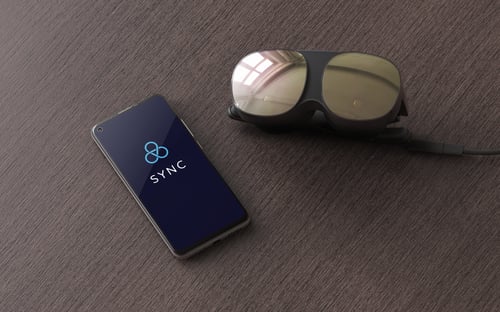Real-time holograms are now a reality!
Also, HTC unveiled the Vive Flow headset. Read on!
8i shows off its real-time holograms
A Venice-California-based company 8i makes tools that capture, transform, and stream holograms using volumetric or 3D video.
8i's latest technology represents a fundamental advancement in volumetric video - real people broadcasted live into immersive digital environments within seconds.
"Holograms are no longer the stuff of science fiction. Real-time holograms empower an entirely new range of experiences for consumers that will foster deeper communication and connection - put you in the front row of a concert or sporting event, eliminate barriers of entry and democratize open access to education, training, information, and resources. Ultimately level the playing field between the haves and have-nots," said CEO of 8i, Hayes Mackaman, in a statement.
"We are creating and delivering interactive content directly to the consumer. Consumers will be able to experience, interact with and replay content in a totally new, immersive way from any angle or perspective, ushering in a new era in the way society communicates, learns, works, and plays. Across all industries, there are multiple opportunities and use cases for real-time holograms to enhance our daily lives."
Check how it works on the video below.
HTC reveals the Vive Flow
HTC has revealed their latest consumer-focused headset, the Vive Flow.
The $499 headset embraces several hardware features designed around miniaturization - the "pancake" optics are thinner than what you'd see in other commercially available headsets, and adjustable diopter lenses allow users to correct their vision in-headset and potentially avoid needing to use glasses with the Flow. The headset overall hosts a lightweight design.
The headset features a 1.6K per eye resolution running at 75 frames-per-second and a 100-degree field-of-view, pass-through cameras hidden by the bug-eye lenses, a fan inside drawing hot air from the user's face and eyes, and dual-hinge arms.
The device doesn't include a battery. The headset must be connected to a power source to function - an external battery charger or a smartphone. The headset is equipped with the last generation Qualcomm XR1 processor, meaning most content designed to take full advantage of competing headsets won't support the Vive Flow.
The Vive Flow does not include controllers or onboard input but instead relies on an accompanying phone app.
HTC pitches the Flow as a wellness and mindfulness device.
That's all for now, see you next time!



